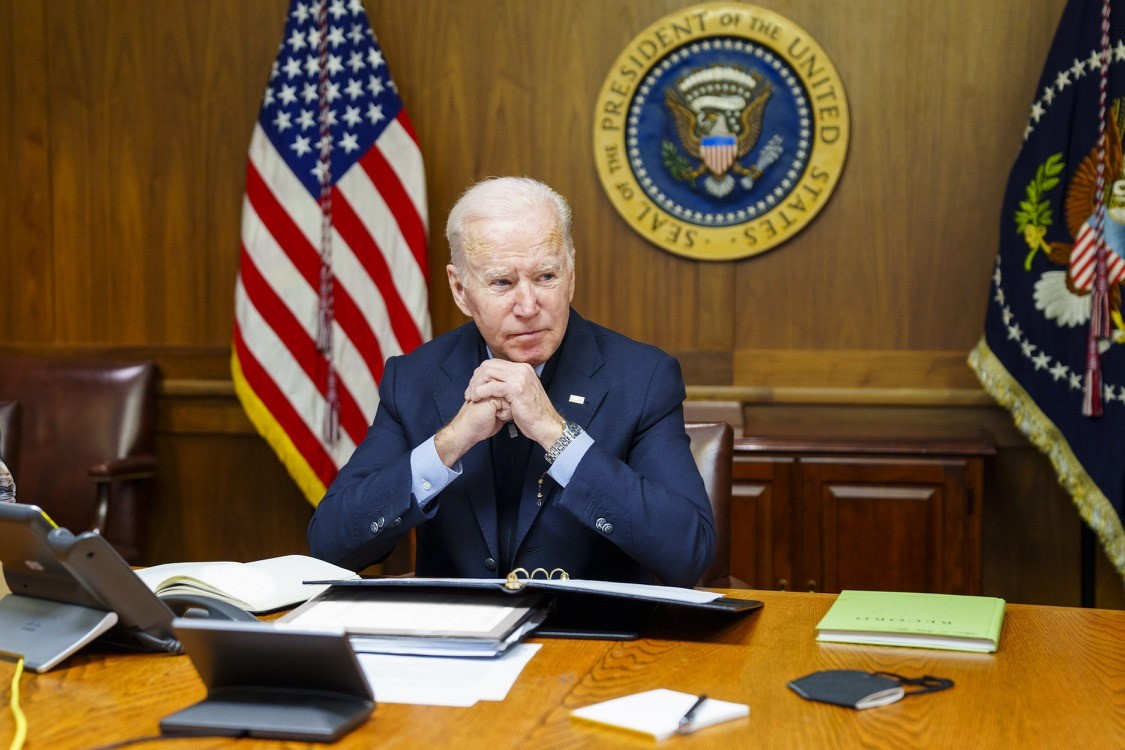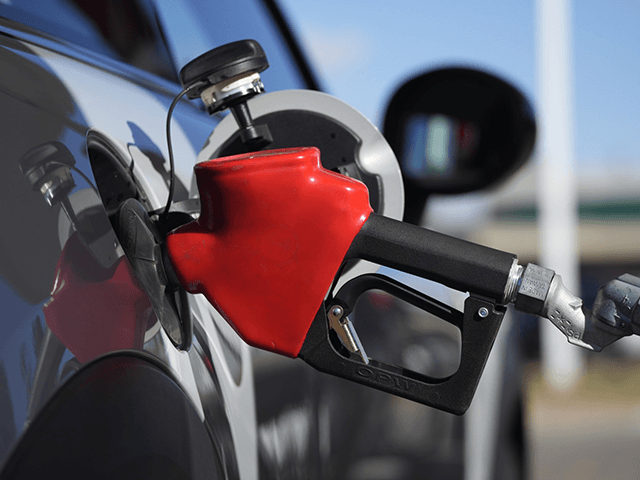President Joe Biden’s war on fossil fuels continues to drive surging oil prices, which are approaching $100 a barrel and will cause American consumers to pay the highest price for gasoline at the pump in at least nine years.
The left-wing media is trying to blame inflation and rising gasoline prices on Russian dictator Vladimir Putin’s aggression toward neighboring Ukraine and cited the recent spike in Brent crude oil at $99.50.
Marketwatch followed that narrative in covering soaring oil prices, including a remark from Brian Milne, editor and product manager at the DTN website, “ensuring American motorists will be paying more for gasoline at the pump. Unless we see a quick resolution, Brent crude will push past $100 a barrel, sending U.S. gasoline prices to $3.75 a gallon by early March.”

This image provided by The White House via Twitter shows President Joe Biden at Camp David, Maryland, February 12, 2022. (The White House via AP)
Marketwatch’s report continued:
Retail gasoline prices were already on the move, with the average national price for regular unleaded at $3.541 a gallon Tuesday morning, according to travel and navigation app GasBuddy. They’re up 2.1 cents from Sunday, and up nearly 21 cents from a month ago. Prices stand at their highest since the summer of 2014, GasBuddy data show. A move to $3.75 or more would lift the per-gallon cost to the highest since about March 2013.
For each $1 a barrel rise in oil prices, the national average gasoline price rises around 1.5 cents a gallon, given base prices of $90 a barrel for U.S. benchmark West Texas Intermediate crude, and $3.65 a gallon for gasoline, says Patrick De Haan, head of petroleum analysis at GasBuddy. If oil spikes by $5 a barrel during a single trading session, for example, motorists would generally start paying for it in as little as 72 hours, with that move fully passed on in seven to 12 days, he says.
When oil prices climbed to $100 back in 2014, gasoline prices were “consistently” in the upper $3 range, from $3.50 to $3.85, says De Haan. Gasoline prices on average peaked at a record $4.10 a gallon in 2008, when oil hit $147 a barrel, he says, but oil didn’t stay high for long.
The Marketwatch report said oil supply disruptions “would be key to the outlook for gasoline,” without reporting on how Biden has tried to shut down as much domestic production of oil as he possibly can, including shuttering the Keystone Pipeline and trying to end oil exploration and production on public land.
The report also notes that OPEC, including the biggest producer, Saudi Arabia, is not responding to Biden’s repeated request for more production abroad.
And as another global oil provider Russia, which is part of OPEC+, could retaliate for the imposition of sanctions.
It’s a “perilous situation that could have a major effect on U.S. motorists and amongst the most dire in recent memory in terms of potential outcome being negative,” De Haan said, adding this could mean a national average gas price at $5 a gallon.
Follow Penny Starr on Twitter

COMMENTS
Please let us know if you're having issues with commenting.